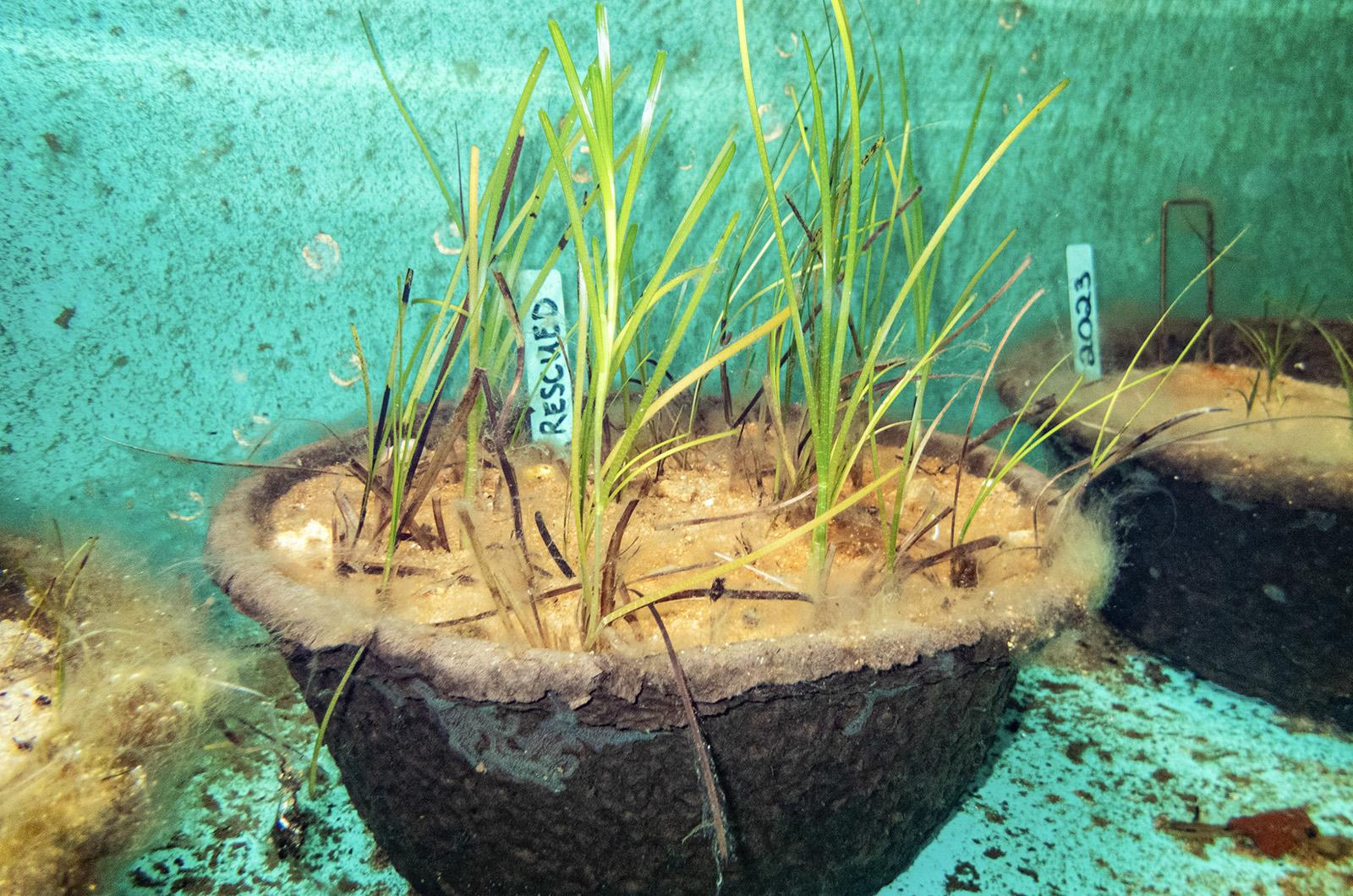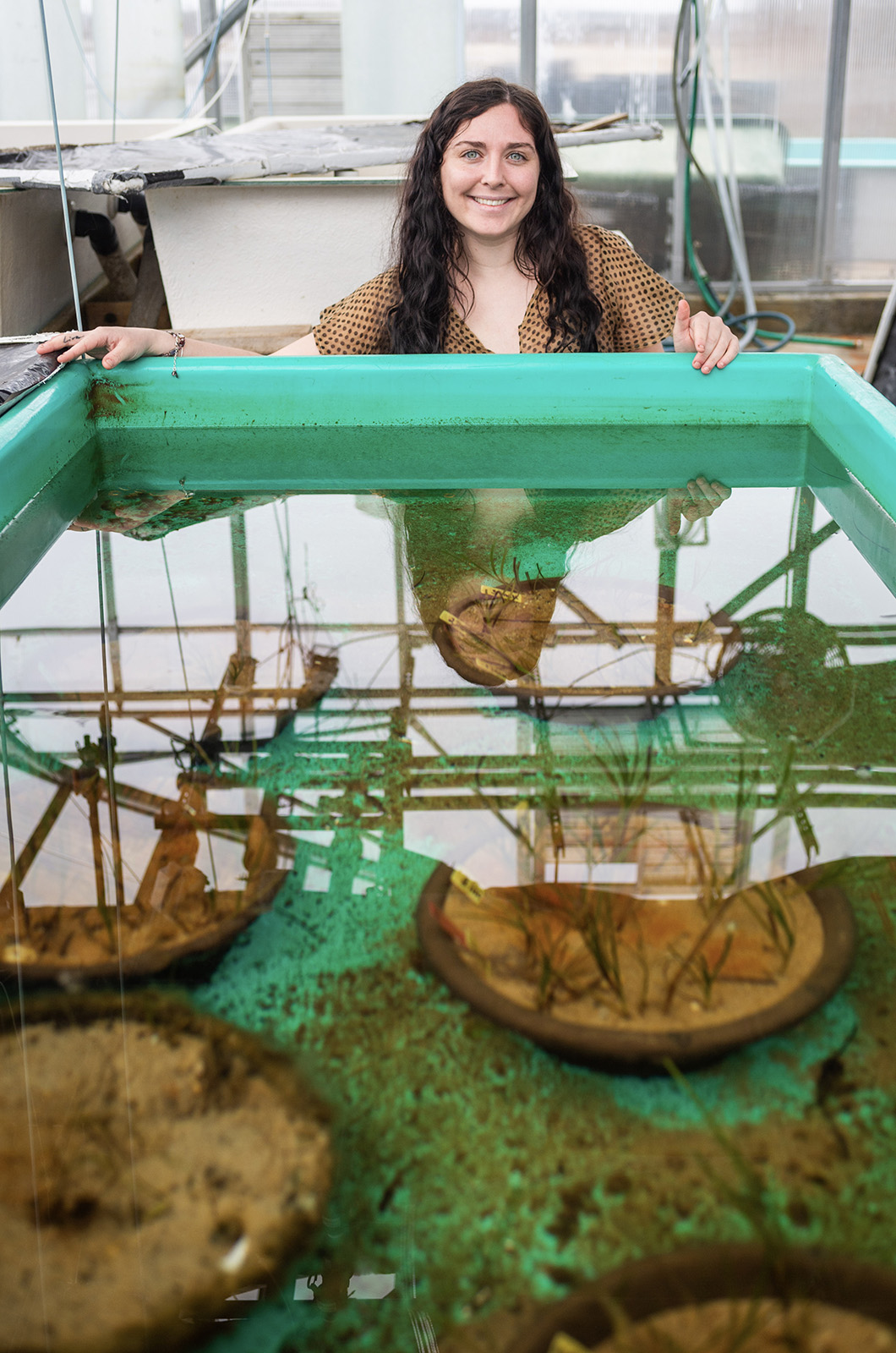A new chapter in Island environmental restoration is blooming in a laboratory on the shores of the Lagoon. There, in a cool tub of water at a Martha’s Vineyard Shellfish Group Hatchery, a small artificial meadow of eelgrass is beginning to flower.
The adaptation is rare enough already for an aquatic plant, with eelgrass being one of just a few species that pollinates underwater. That rarity is compounded on-Island by the environmental conditions now threatening local eelgrass populations.
This year’s flowering is, thus far, the most successful since the shellfish group began the program, said eelgrass restoration coordinator Alley McConnell. It points to a promising future for the ecologically critical plant, she added, during a recent interview at the hatchery.
Eelgrass provides a critical ecological link in the Vineyard’s aquatic ecosystems, providing an oxygen-rich habitat for bay scallops and other underwater creatures. Declining water quality has threatened the sensitive grass species in recent years, however, impelling the shellfish group to begin efforts to boost its chances in the wild.
Though restorationists in other areas often harvest wild eelgrass seed to distribute in threatened areas, the Vineyard’s existing eelgrass beds are not healthy enough to produce a viable seedstock. And so, the shellfish group has taken to growing an artificial meadow to try and produce new seeds.
But unlike the colorful blooms of a wildflower meadow, successful eelgrass pollination is much harder to spot to the untrained eye.
“This is the very beginning stage of flowering,” Ms. McConnell said, pointing out the key indicator for the start of the process: branching blades of grass.
Under typical growth conditions, she said, eelgrass grows in singular blades from one spot at the base. Then, when warmer water indicates the changing season for the plants, those individual blades begin to branch off.
“Springtime brings those hormones out and makes them flower,” she said, in particular the hormone florigen. While eelgrass always produce florigen, the warm weather activates a mechanism within the grass that allows it to do its work.
“They’re always fighting the urge, I guess, to flower,” she said.
Last year, the three flowering shoots in her tank had the potential to develop as many as 150 seeds, but she only managed to successfully harvest five seeds, an issue Ms. McConnell attributed to management of waterflow.
This year, however, she has upped her operation, and now has 12 flowering shoots which could produce up to 600 seeds to be distributed throughout Island waterways.
This method of “broadcasting” seeds has certain advantages over other restoration strategies, such as replanting uprooted grass shoots, which Ms. McConnell has previously focused on.
Eelgrass grown in situ is more likely to survive than a transplanted specimen. “If they can germinate out there, they’ll get used to all the sediment and they can assimilate,” Ms. McConnell said.
That strategy can also help restorers achieve more success with less labor, Ms. McConnell said, something she found out firsthand last year as part of a tour of eelgrass restoration projects across the country. That project was funded by a Martha’s Vineyard Vision Fellowship.
“There’s places like, for example, in the Chesapeake Bay, that have a lot of success with large groups of seed broadcasting,” she said. “They collected fifteen million seeds there this year.”
Chesapeake has other advantages, too, specifically involvement from large nearby university labs and the ability to harvest wild seed from still existing meadows.
On the Vineyard, though, Ms. McConnell said she has been able to count on particularly strong community involvement in her efforts, which has made even more labor-intensive restoration efforts possible.
The eelgrass community, though, stretches beyond just humans. Its role in the ecosystem, from providing habitat for myriad baby sea creatures to carbon sequestration and nitrogen mitigation, puts them at the center of healthy Island great ponds, and makes restoration all the more important.
“It really is foundational to a lot of things around here,” Ms. McConnell said.








Comments
Comment policy »